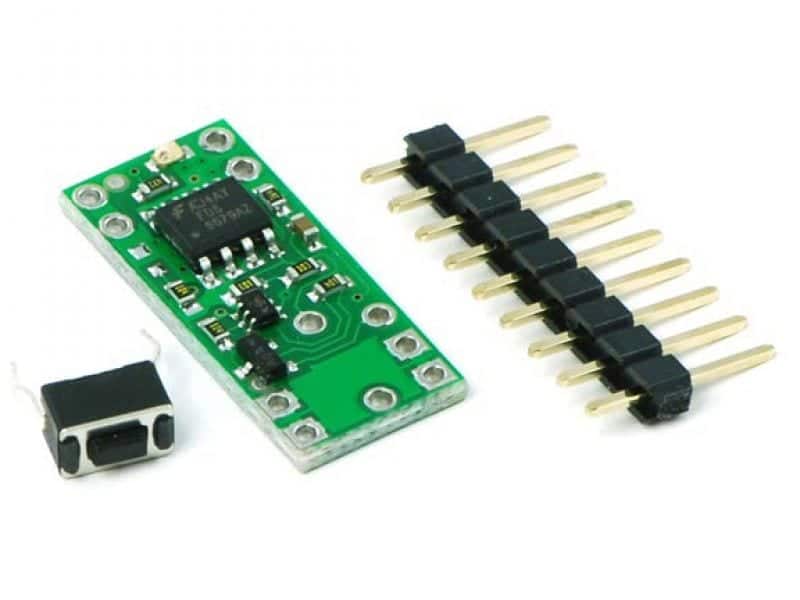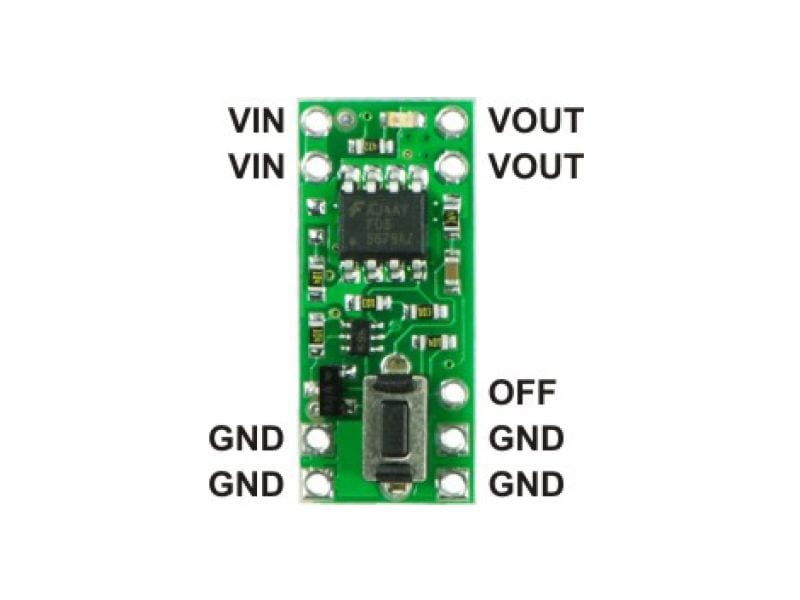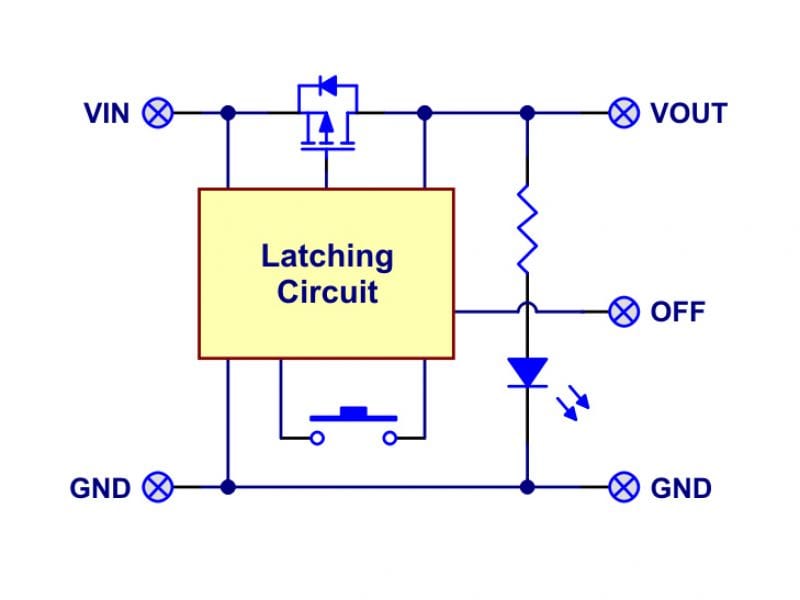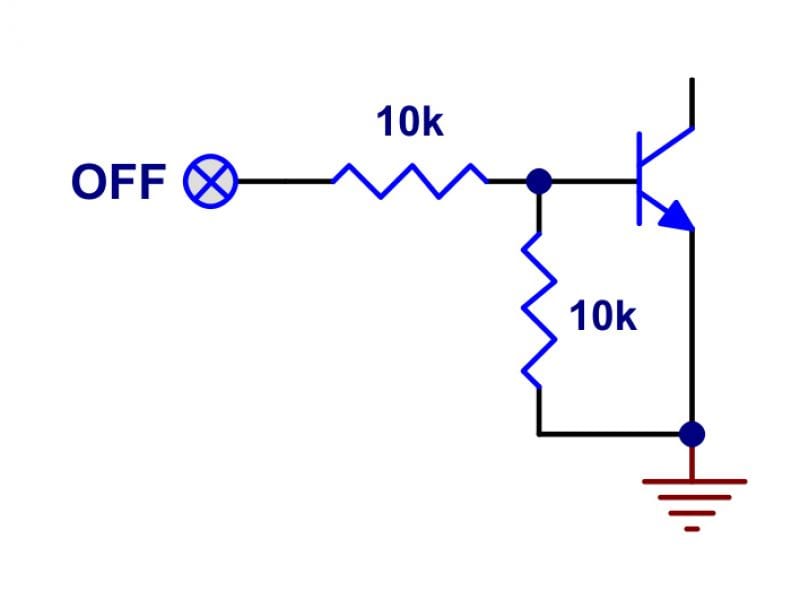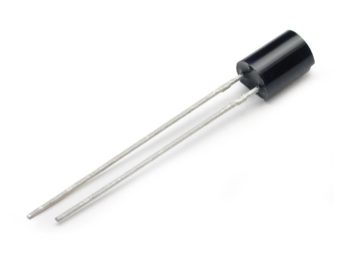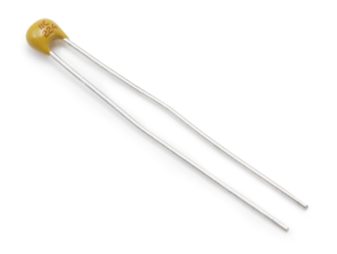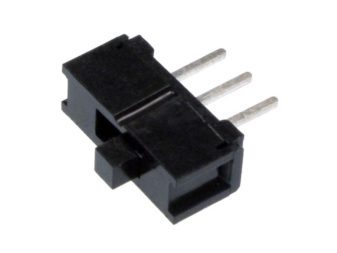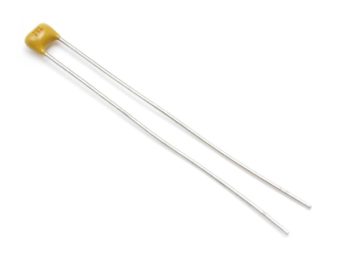Pololu Pushbutton Power Switch SV
USD $6.95
The Pololu Pushbutton Power Switch is an alternative to bulky mechanical switches. Small switch with big current ability!
DESCRIPTION
Switches are funny things. They've been around forever, but are quite expensive, especially when designed to run higher DC currents. Pololu has developed this solution, that is small, tidy, and powerful - the Power Switch SV!
There are two versions, so be aware: This is the Standard 4.5-20V version.
Originally intended as a DC power switch for small robots, it offers optimizations, but with a few limitations:
Benefits over mechanical switches
- Compact size
- Allows multiple (parallel) switches for improved user interface
- Better turn-on characteristics than a bouncing mechanical switch
- Limited LC spikes for low-resistance loads
- Allows self-shutoff
- Breadboard and perfboard compatible
Drawbacks compared to mechanical switches
- Switch is one-directional (inherent body diode in MOSFET)
- Limited operating voltage range
- Switches DC only (does not maintain state through power disruptions or excessive noise)
- No complete isolation in off state
Specifications
- Dimensions: 0.4" x 0.9" x 0.125" (without header pins and pushbutton installed)
- Operating voltage: 4.5-20V (SV version), 2.5-7.0V (LV version)
- Maximum current: 10A (see MOSFET datasheets)
- Weight without included pushbutton: 0.030oz (0.85g)
- Weight with included pushbutton: 0.035oz (1.0g)
- Draws very little current in off state (typically under 0.01μA)
Typical Applications
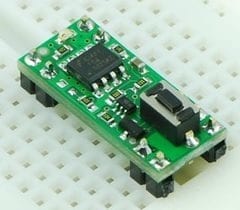 |
| Pololu Pushbutton Power Switch on a solderless breadboard. |
|---|
The Pololu Pushbutton Power Switch can fit in an 18-pin DIP (dual in-line package) footprint, making it compatible with solderless breadboards and perforated printed circuit boards with standard 0.1" spacing. For such applications, the included male header pins can be soldered to the switch PCB as shown in the picture to the right. Alternatively, wires can be soldered directly to the switch PCB for non-breadboard applications. For high-current applications, make sure that the wires can safely carry the current. Two pads/pins are provided for each of the power nodes, and multiple pads should be used for applications drawing over 5A.
The included pushbutton switch can be used to trigger the switch. Alternatively, a separate pushbutton, such as a remote panel-mounted unit, can be used instead. Multiple pushbuttons can be wired in parallel for multiple control points, and each of the parallel pushbuttons will be able to turn the switch on or off. The latching circuit performs some button debouncing, but pushbuttons with excessive bouncing (several ms) might not function well with this product.
Principles of Operation
The Pololu Pushbutton Power Switch has two main components: a P-channel power MOSFET that switches the load current and a latching circuit that controls the gate of the MOSFET.
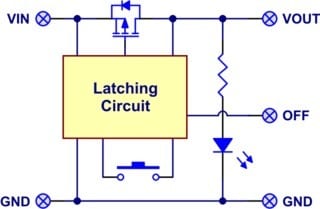  |
| Pololu Pushbutton Power Switch block diagram. |
|---|
The overall switch performance is determined by the MOSFET characteristics, which are specified in their datasheets. The standard voltage version uses the FDS6679AZ (421k pdf); the low-voltage version uses the FDS4465 (141k pdf). The latching circuit is designed to operate over a wide range of voltages and to draw very little current in the off state (typically under 0.01μA). In the on state, the switch pulls the MOSFET gate to within 0.2V of ground so that the MOSFET’s Vgs can be approximated as the supply voltage.
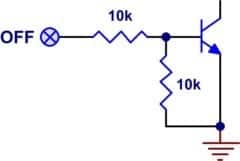 |
| Pololu Pushbutton Power Switch OFF input detail. |
|---|
The latching circuit controlling the power MOSFET includes an OFF input that can be used by the target device to shut off its own power. The internal structure of this input is shown to the right. Applying more than approximately 1V to the OFF pin will cause the power switch to turn off. The maximum voltage for the OFF pin is 30V independent of the switch voltage (VIN).
Characteristics at Limits of Operating Range
The switch operating range is limited by the ability to change state reliably. At low voltages, the switch is difficult to turn on, and the switch will turn itself off once the voltage falls far enough (typically 3V and 1.5V for the SV and LV versions, respectively). At high voltages, the switches become difficult to turn off. The reliability of turning off is affected by a combination of the supply voltage, the amount of bouncing on the pushbutton switch, and the amount of noise on the supply line. For applications at the high end of the operating range, tests should be performed to ensure that the device can properly turn off.
Useful links:
Using the Pololu Pushbutton Power Switch
RESOURCES & DOWNLOADS
Additional information
| Weight | 0.0026 kg |
|---|---|
| Dimensions | 7.47 × 6.587 × 0.402 cm |
| Type | |
| Voltage | |
| Current |
REVIEWS
Solarbotics, Ltd. is not responsible for misprints or errors on product prices or information. For more information, please see our Terms and Conditions.
Warning: This product contains chemicals known to the State of California to cause cancer and birth defects or other reproductive harm.
Please visit www.P65Warnings.ca.gov for more information. This item was manufactured prior to August 31, 2018.

